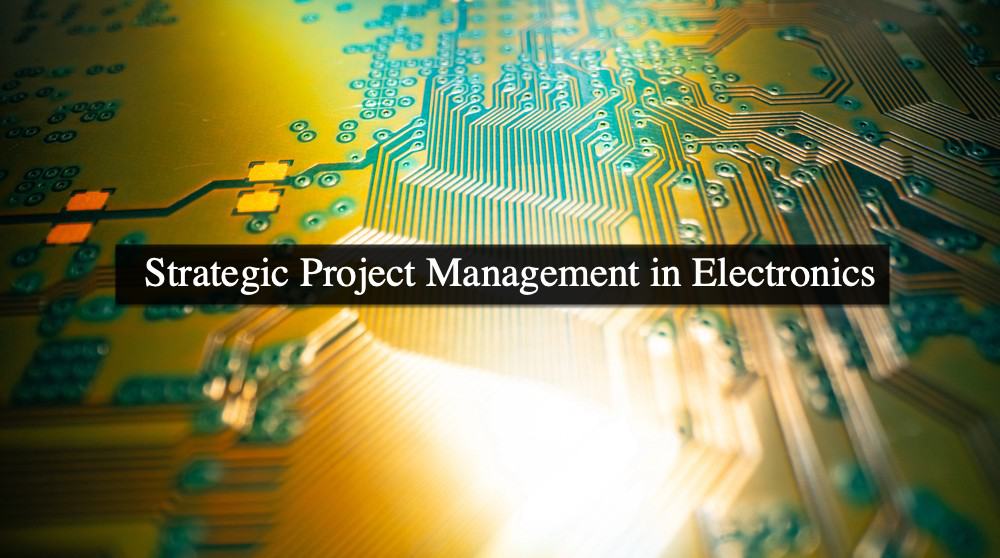Strategic Project Management in Electronics

The electronics industry is always changing, presenting both opportunities and challenges. Successful project management requires technical skills, strategic thinking, careful planning, and adaptability. Electronics projects face specific challenges, like dealing with outdated components and managing complex supply chains. New technologies like IoT and AI add to this complexity.
This article explores strategic project management in electronics, offering practical strategies to help project managers achieve effective and sustainable results in a fast-paced environment.
What key challenges do project managers face in the electronics industry? How can adopting innovative tools and techniques enhance project outcomes in this sector?
Challenges at the Core: Component Obsolescence and Supply Chain Complexities
One major challenge in electronics project management is electronic component obsolescence. As technology advances, components can quickly become outdated or discontinued, making it hard for manufacturers to find replacements. This problem worsens because many products rely on specialized components that are not produced for long. Project managers must spot these risks early and plan for alternative parts or product redesigns.
Another challenge is the complexity of global supply chains. These supply chains can be delicate and affected by political tensions, natural disasters, and changing market demands. Delays in getting important components can slow down projects, increase costs, and upset stakeholders. To manage this effectively, project managers should build strong supply chains by using different suppliers, keeping good inventory, and working closely with vendors.
By addressing these issues directly, project managers can keep their projects on track, even when faced with unexpected obstacles.
Risk Management: Uncertainty in Electronics Projects
Risk management is crucial for successful projects in the electronics industry, where uncertainty is constant. Project managers must quickly identify risks like component shortages and shifting customer needs.
Having strategies to minimize these risks is essential. For example, keeping extra stock of key components can prevent shortages, and regular design reviews can catch potential issues early. Backup plans, such as alternative sourcing options, help teams adapt to unexpected challenges.
Effective communication is also important. Regular updates with stakeholders, suppliers, and team members ensure everyone is informed and ready to respond. By adopting a proactive approach to risk management, project managers can reduce uncertainties and turn challenges into opportunities for growth.
Strategic Planning: Building Resilience into Project Frameworks
Strategic planning is very important for resilience in electronics projects. It helps teams tackle challenges while focusing on long-term goals. Unlike reactive management, which addresses problems as they arise, strategic planning anticipates issues and includes flexibility. This allows projects to adjust to changes without losing quality or deadlines.
Aligning project goals with organizational and market needs helps prioritize resources and focus on high-impact areas. Scalable design processes also enable adjustments when demand or technology shifts.
Scenario planning is another effective tool. By considering various potential outcomes—like supply chain issues or regulatory changes—project managers can create backup plans to minimize impacts. Regularly updating the project roadmap keeps it relevant in a fast-changing industry.
Through strategic planning, electronics project managers can create structures that navigate challenges and seize new opportunities.
Tools and Methods for Project Management
In the fast-moving electronics industry, using the right tools and methods is essential for effective project management. These resources keep teams focused and help deliver results on time and within budget.
Agile methods allow teams to work in short cycles, making it easier to adapt to changes, such as new customer needs or technical issues. Lean principles help reduce waste and increase value during development.
Project management software like Jira, Trello, or Microsoft Project tracks tasks and resources, while supply chain tools like SAP or Oracle manage inventory and supplier coordination.
Collaboration tools like Slack and Microsoft Teams enable real-time communication among remote teams. Specialized software, such as Altium Designer or MATLAB, ensures accuracy and fosters innovation. Using these tools and methods together boosts efficiency and lowers risks in the electronics industry.
To succeed in project management, it is important to address uncertainties with a clear and flexible approach. This not only helps individual projects succeed but also supports the ongoing success and innovation of the organization. In a constantly changing field, exceptional project managers can anticipate, adapt, and deliver results. With effective strategies, today’s challenges can turn into tomorrow’s opportunities, leading to growth and technological progress.
How do you approach uncertainty in your projects? What strategies have proven effective for you in turning challenges into opportunities? Embracing these questions can lead to deeper insights and foster a culture of growth within your team.

